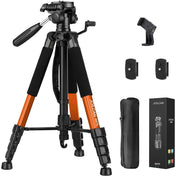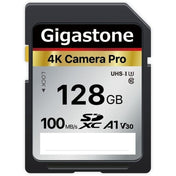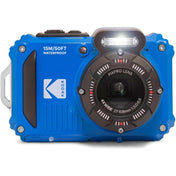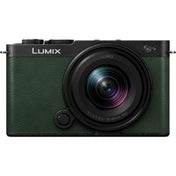Welcome to the thrilling world of sports photography, where capturing the perfect action shot can set you apart from the crowd. Whether you're a budding photographer or a seasoned pro, mastering the art of photographing fast-paced sports events is essential to your success. In this article, we will explore techniques, tips, and equipment recommendations, including the importance of lighting equipment such as the Macro Ringlight for Canon EOS Rebel T7, to help you elevate your sports photography skills.
Understanding the Basics of Sports Photography
Before diving into advanced techniques, it's crucial to grasp the fundamentals of sports photography. Here are some key points to consider:
Shutter Speed
Fast shutter speeds are essential for freezing action. To capture crisp shots of athletes in motion, a shutter speed of at least 1/500 sec is recommended. If you're capturing high-speed sports like basketball or soccer, consider even faster speeds to avoid motion blur.
Aperture and Depth of Field
The aperture controls the depth of field in your images. A wider aperture (lower f-stop number) will blur the background, making your subject stand out. This technique is particularly useful in crowded scenes where distractions abound. Experimenting with the Macro Ringlight for Canon EOS Rebel T7 can help you achieve stunning focus effects.
ISO Settings
In low-light conditions, increasing your ISO setting can help maintain fast shutter speeds while ensuring your images remain bright. However, be cautious, as higher ISO settings may introduce noise. A balance is key.
Essential Equipment for Action Shots
While skill is essential, the right equipment also plays a significant role in capturing stunning action shots. Here are some must-have tools for sports photography:
Camera Setup
A DSLR or mirrorless camera with a fast autofocus system is ideal for sports photography. The Canon EOS Rebel T7 is a popular choice because of its user-friendly interface and compatibility with different lenses, including the Macro Ringlight for Canon EOS Rebel T7. This lighting accessory can provide adequate illumination during indoor events or low-light conditions.
Lenses
Faster lenses with longer focal lengths (like 70-200mm) are perfect for action shots from the sidelines. These lenses will help you zoom in on athletes and capture expressions and movements in detail. If you're interested in close-up macro shots, consider using the Macro Ringlight for Canon EOS Rebel T7 to highlight intricate details.
Tripods and Monopods
When photographing action, stability is vital. A sturdy tripod or a portable monopod can help minimize camera shake, allowing you to capture sharper images. A monopod is particularly beneficial for sports, as it provides flexibility and mobility while still offering support.
Mastering Composition Techniques
The composition of your photographs can enhance the storytelling aspect of your sports shots. Here are some tried-and-true techniques for better framing:
Rule of Thirds
By dividing your image into a grid of nine equal parts, you can position your subjects along these lines or at their intersections for a more dynamic shot. This technique adds balance and draws viewers' eyes to your subjects.
Framing and Leading Lines
Using natural frames, such as trees or goalposts, can direct the viewer's attention to the action. Additionally, look for leading lines in the environment that can guide the eye toward the focal point of your shot.
Anticipate the Action
Knowing the game’s flow can significantly improve your chances of capturing great moments. Observe the players’ movements and anticipate where the action will happen. Being ready for the decisive moment is what will set your shots apart.
Utilizing Light for Dramatic Effects
Good lighting is one of the most critical elements in photography, especially for action shots. Here’s how to use light to your advantage:
Natural Light
Whenever possible, use natural light to illuminate your subjects. Early mornings or late afternoons provide soft, beautiful light that enhances colors and reduces harsh shadows.
Artificial Light
When shooting indoors or in low-light situations, consider using external flash units or continuous lighting. The Macro Ringlight for Canon EOS Rebel T7 can be a great addition to your kit, offering even and diffused lighting that will enrich your sports photos.
Backlighting Techniques
Experimenting with backlighting can create dramatic effects and silhouettes. Position the sun behind your subject to give your photographs a unique and striking appearance that showcases the athletes' forms.
Editing and Post-Processing Tips
The editing phase is where you can truly elevate your sports photographs. Here are some valuable post-processing tips:
Crop for Impact
Crop your images to eliminate distractions and focus on the main subject. Cropping can also improve composition by following the rule of thirds or highlighting specific details, especially in close-ups taken with the Macro Ringlight for Canon EOS Rebel T7.
Color Correction
Adjusting colors and exposure can dramatically improve your final images. Use software tools to balance color tones, enhance shadows, and brighten highlights, ensuring your photographs are vibrant and true to life.
Sharpening Techniques
Applying sharpening post-capture can enhance detail, especially in action shots. Be careful not to overdo this effect; subtlety is key for maintaining a natural look.
Building Your Portfolio
As you grow your skills in sports photography, curating a portfolio of your best work will be essential in showcasing your talent. Here are some steps to consider:
Choose Your Best Shots
Select a range of images that demonstrate your ability to capture action, emotion, and storytelling in sports. Focus on quality over quantity, ensuring each image contributes to the narrative of your portfolio.
Online Presence
Utilizing platforms like Instagram, personal websites, and photography communities can help introduce your work to a broader audience. Make sure to optimize your online profiles and showcase your sports portfolio effectively.
Networking and Collaboration
Connecting with other photographers, athletes, and sports teams can open opportunities for collaboration and exposure. Attend sporting events, join photography clubs, and participate in online forums to bond with others who share your passion.
Igniting Your Passion for Action Photography
Sports photography is not just about freezing moments in time; it's about telling stories, capturing emotions, and celebrating the artistry of athleticism. As you embrace these tips and techniques, you'll enhance your skills and develop a unique perspective. Your journey of mastering the art of action shots will undoubtedly bring excitement, creativity, and fulfillment to your photography pursuits. Keep experimenting, stay patient, and let your passion for the sport drive your lens. Happy shooting!











